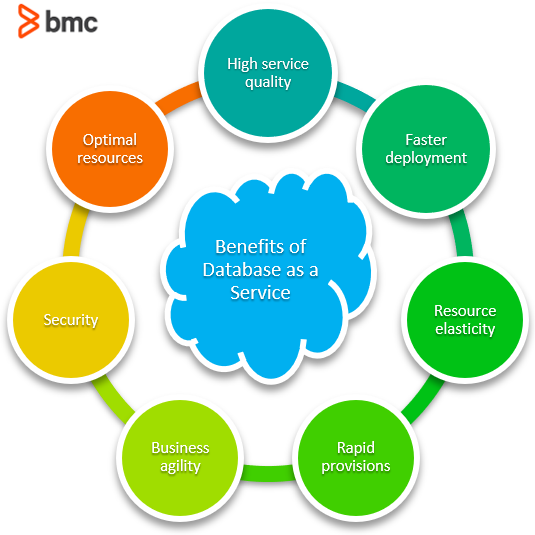What is database as a service? DBaaS explained


Database as a service (DBaaS) is one of the fastest growing cloud services—it’s projected to reach $320 billion by 2025. The service allows organizations to take advantage of database solutions without having to manage and maintain the underlying technologies.
DBaaS is a cost-efficient solution for organizations looking to set up and scale databases, especially when operating large-scale, complex, and distributed app components.
In this article, we will discuss Database as a Service, how it works, and its benefits to your organization from both technology and business perspectives.

Database as a Service is defined as:
“A paradigm for data management in which a third-party service provider hosts a database and provides the associated software and hardware support.”
Database as a Service is a cloud-based software service used to set up and manage databases. A database, remember, is a storage location that houses structured data. The administrative capabilities offered by the service includes scaling, securing, monitoring, tuning and upgrading of the database and the underlying technologies, which are managed by the cloud vendor.
These administrative tasks are automated, allowing users to focus on optimizing applications that use database resources. The hardware and IT environment operating the database software technologies is abstracted. Users don’t need to focus their efforts on the database implementation process itself. The service is suitable for:
Depending on the service, the DBaaS service can be a managed front-end SaaS service or a component of the comprehensive Infrastructure as a Service (IaaS) or Platform as a Service (PaaS) stack.
Here’s how a typical DBaaS, as part of the IaaS, works:
The first step involves provisioning a virtual machine (VM) as an environment abstracted from the underlying hardware. The database is installed and configured on the VM.
Depending on the service, a predefined database system is made available for end users. Users can access this database system using an on-demand querying interface or a software system. Alternatively, developers can use a self-service model to set up and configure databases according to a custom set of parameters.
The DBaaS platform handles the backend infrastructure and operations. Database administrators (DBAs) can use simple click-on functionality to configure the management process. These include, but aren’t limited to:
The DBaaS platform scales the instances according to the configuration and policies associated with the managed database systems.
For example, for disaster recovery use cases, the system replicates the data across multiple instances. The building blocks of the underlying components, such as a server resource, are controlled by the platform and rapidly provisioned for self-service applications of database deployment.
Without a managed database service or a DBaaS, you’ll have to manage and scale hardware components and technology integrations separately. This limits your ability to scale a database system rapidly to meet the technology requirements of a fast-paced business.
DBaaS technology saves valuable resources on setting up and managing database systems and the IT environment. The technology reduces the time spent on the procedure from weeks and days to a matter of a few minutes. This is especially true for self-service use cases in DevOps environments that require rapid and cost-effective operations capabilities for their IT systems.
From a business perspective, the DBaaS technology offers these benefits:
While Database as a Service (DBaaS) offers solid advantages, you may need to make some tradeoffs and compromises. Outsourcing this critical part of your infrastructure has several potential negatives:
Choosing the right DBaaS platform and vendor is a matter of finding the best options for your data strategy, performance requirements, and expectations for the future. Consider what kinds of workloads need support and the analytics tools you will use. You will want flexibility in deployment and licensing. Below are some of the most important capabilities to consider.
Look for providers that offer multiple deployment models, from a fully managed cloud to compatibility with sensitive data kept on premise to a hybrid approach. You may want a multi-cloud environment or a private cloud, depending on regulatory requirements and your operations.
Avoid budget and operational limitations with usage-based licensing that scales as your workloads change. You may want to consider pay-as-you-go or a subscription model. You should have the flexibility to switch tiers without heavy penalties.
Given the growing use of data lake architectures, your vendor should be able to integrate with them for ingesting, storing, and analyzing diverse data types. Ideally, your DBaaS provider can handle large volumes of structured and unstructured data for traditional analytics and AI/ML workloads, all in a single environment.
You will need more than basic provisioning, with tools that empower you to optimize your data operations. Your provider should offer tools for performance tuning, workload balancing, and intelligent automation. Features like auto-scaling, indexing recommendations, and resource optimization help with uptime and performance.
Storage is just the beginning of what a DBaaS should offer — analytics is where the value truly lies. Look for a rich analytics layer that allows you to extract as much insight as possible. The best vendors offer native integration with BI tools, complex query support, and capabilities such as machine learning, predictive modeling, and in-database processing.
Database as a service is just one more “as a service” offering that can bring agility, flexibility, and scaling to any business, no matter your size or industry.